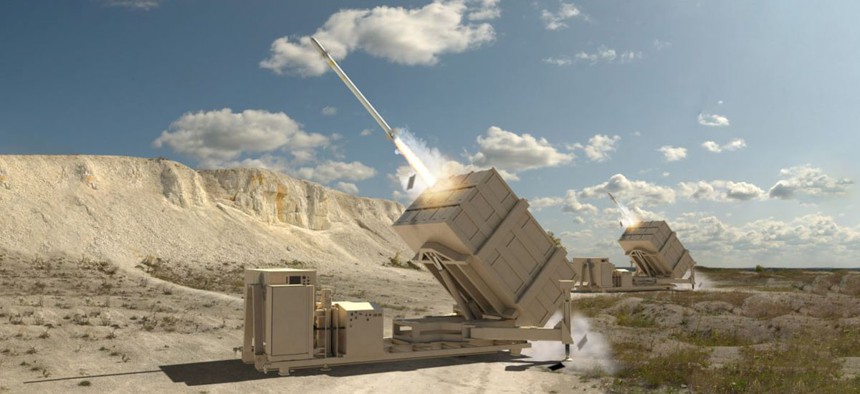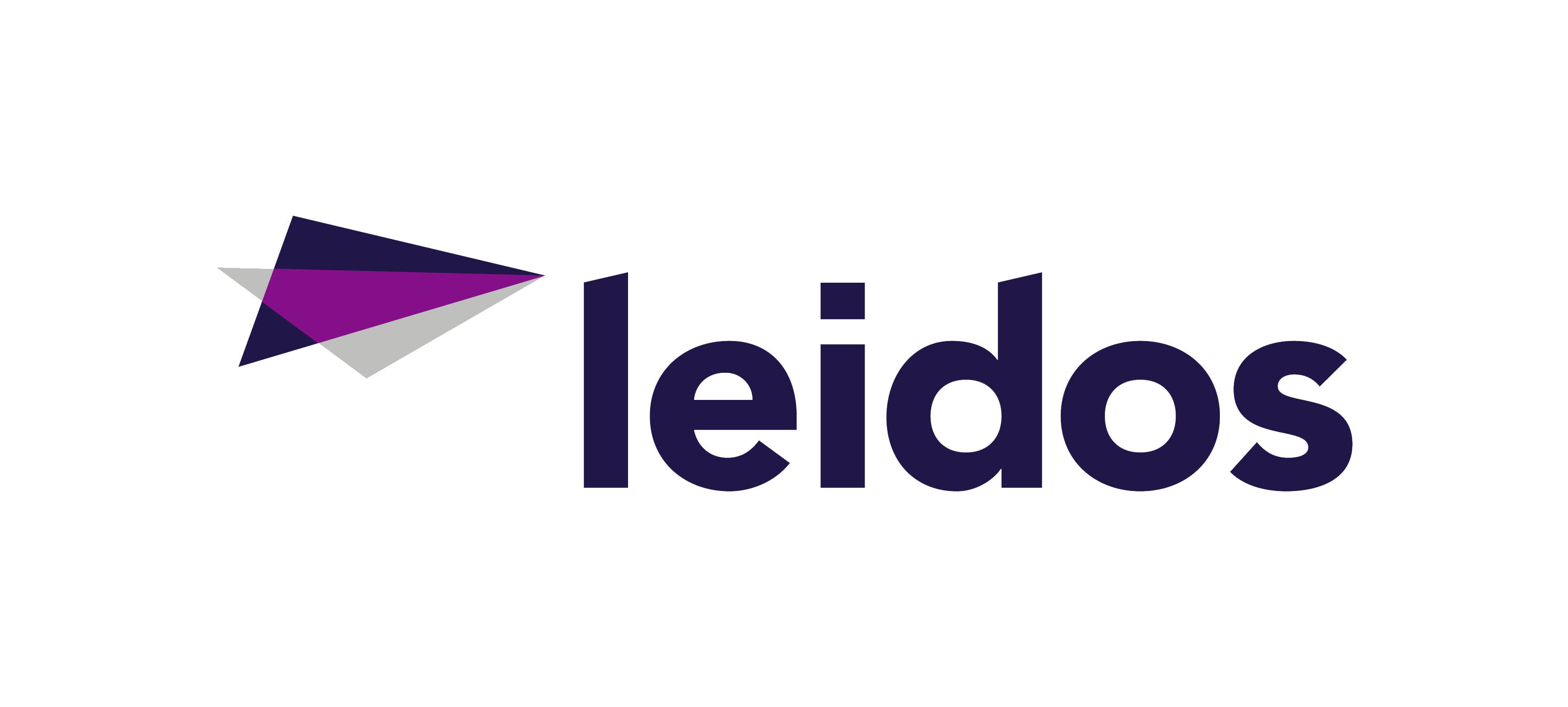sponsor content What's this?

Illustration by Leidos Dynetics Group
New air defense system leverages open architecture against airborne threats
Presented by
Leidos

Drones, cruise missiles and unmanned aerial systems (UAS) pose growing threats to U.S. service members and allies. In a 2022 report, the Department of Defense (DoD) noted, “accelerating technology trends continue to transform applications of UAS, making them increasingly capable platforms in the hands of both state and non-state actors.”
As advancing counter-drone and counter-missile technologies becomes a critical priority, Leidos Dynetics Group is developing Enduring Shield, an advanced air defense system designed to protect U.S. Army soldiers and assets amid a shifting threatscape.
Matching defense to threat
The ongoing war in Ukraine is a real-time demonstration of the importance of precision and adaptability in defending against evolving aerial warfare. The amount of variation in drone and missile types, degrees of complexity and delivery systems requires a diverse and adaptable response. A layered defense approach is more important than ever.
“We have to have the right defense for the right threat, so that we’re not expending our highest end, complex weapons on more simplistic threats,” says Larry Barisciano, senior vice president of weapons technologies and manufacturing at Leidos Dynetics Group. “Really making sure that we're able to match defense to threat is a key lesson that's come out of Ukraine.”
Determining the right match involves three key steps: 1) identify the threat; 2) figure out how to engage the threat; 3) decide how to eliminate the threat. But this simply stated process belies the complexity of decision-making that must happen in a limited amount of time. Accuracy depends on a range of front-end capabilities, sensors, radar and surveillance solutions that can quickly distinguish between a drone swarm and a flock of birds, for example. Paired with these technologies, Enduring Shield will help fill the Army’s missile and drone defense capability gaps.
A flexible system meets challenges of evolving warfare
As a ground-based missile interceptor system, Enduring Shield is designed to be palletized, enabling the Army to transport it using existing infrastructure. It’s cost-effective, simple to operate and can engage multiple targets at once. Perhaps most crucially, its open architecture provides the flexibility to meet the Army’s needs now and in the future.
“It’s currently being designed with the AIM-9X missile, but the open system architecture allows for different missiles to be integrated into the system for different threats or goals that the Army might have,” says Elizabeth Robertson, vice president of Enduring Shield at Leidos Dynetics Group. “It’s also going to be integrated with the Army’s IBCS, which allows for all of the Army’s systems to talk seamlessly.”
IBCS, or Integrated Battle Command System, “provides a common engagement operations center and data sharing capability for all echelons of Army Air and Missile Defense, through all domains of military operations.” Enduring Shield’s compatibility with IBCS will allow it to be easily incorporated into the Army’s existing layered defense strategy, while its overall open architecture “provides more flexibility to allow the Army to evolve the system for any other command and control systems in the future,” Robertson says.
Current status and next steps
As the Leidos Dynetics team works to deliver 16 Enduring Shield launchers to the Army, mechanical and software developments are progressing in tandem. Mechanical fabrication is largely complete on 12 of the launchers, which are performing as designed during initial testing, Robertson says. Thanks to a more modern “rapid prototyping, rapid fielding” DoD development model, Barisciano adds, progress is faster than traditional weapons development, which followed a methodical waterfall approach.
“When you're developing something new, there's always discovery along the way,” Barisciano says. “We've really had a great relationship with the Army to adapt, in real time, to hold to the ultimate fielding timeline of the system, while also being able to adjust to things we find along the way.”
Leidos has not been immune to supply chain issues impacting industries worldwide over the past several years, but flexibility and strong partnerships keep significant disruptions at bay. The team regularly meets with suppliers, some on a daily or weekly basis, to navigate shifting timelines and roadblocks, resulting in “a lot less hardware risk than when we started,” Robertson says.
Dynetics also has capabilities related to fabrication, testing, machining and more built into its facilities in Huntsville, Alabama, allowing the team to fill some supply chain gaps through in-house support. Much like the Enduring Shield system itself, a flexible and adaptable development process is essential to success in a tumultuous environment.
As mechanical production and problem solving moves forward, the Dynetics team is also working with the army and subcontractors on software integration, which will enable further testing of the system, and highlighting its capabilities.
“We’ve demonstrated loading procedures — loading simulated magazines — and demonstrated the transportability of the system, which is key for the users in the soldier community,” Robertson says. “We’re demonstrating as much of the system as we can while we continue to do parallel software integration with the customer.”
The future of defense
As threats and defense strategies evolve, flexibility will remain a key focus for the DoD and Leidos Dynetics Group. If the only constant in life is change, the systems used to protect lives must be built to adapt to an unpredictable future. Defense systems with open architectures, like Enduring Shield, are game changers in terms of agility and flexibility.
“We can’t really forecast where [aerial threats] are going to be 5-10 years from now, other than that they will continue to evolve,” Barisciano says. “Knowing the government’s desire to have this cruise missile defense capability be able to change over time and incorporate additional interceptors — adaptability throughout the entire kill chain of force protection is critical.”
Learn more about how Leidos Dynetics Group is engineering cutting-edge technology to prepare for the future of defense.
This content is made possible by our sponsor, Leidos. The editorial staff was not involved in its preparation.
NEXT STORY: How Salesforce is Helping Governments Modernize Contact Centers, Improve Citizen Experience






